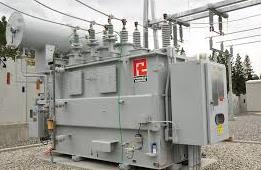Useful equations for transformers relate voltage, current, and number of turns in the primary and secondary coils. In the equation, we assumes that the power we feed into the transformer is the same power given out. This assumption is based on another assumption that the coils of wire in the transformer is negligible.
Electrical power = Current(I) x Voltage(V)
power input from primary coil = Current in primary coil (Ip) x Voltage in primary coil(Vp)
power output from secondary coil = Current in secondary(Is) x Voltage in secondary coil(Vs)
For an ideal transformer that has no energy loss;
Power input = power output
that is: Ip x Vp = Is x Vs
useful equations for transformers: The turn ratio
From previous lessons, we learnt that the magnetic flux changes in the primary coil. This changing magnetic flux links with each turn in the secondary coil.

Total e.m.f in the secondary coil is the sum total of the e.m.f induced in each turn of wire in the secondary coil. The voltage produced in the secondary coil is proportional to the number of turns in that coil. The voltage changes as the number of turns changes. We show that, the secondary coil multiplies the voltage supplied from primary coil by a constant factor that is given by:
From the above equation we can see that:
in short form;
The above equation is know as the turns rule and helps determine voltage produced by a transformer.
The useful equations for transformers
From the equation :
we can obtain by rearranging the equation:
combining this with the turns rule equation we have:
Example 2 problems: useful equations for transformers
A transformer is used to provide power to a 10 V lamp from an a.c mains supply of 240 V. What should be the number of turns of the secondary coil if primary coil has 1800 turns.
solution to the problem
This is a case of step-down transformer. The voltage from the mains needs to be reduced to 10 V needed by the lamp.
Example problem 2
A power station has an output of 45KΩ at a potential difference of 10 Kv. A transformer with a primary coil of 2000 turns is used to step up the voltage to 140Kv for transmission. Assuming that there is no power losses in the transformer, calculate:
(a) current in the primary coil
(b) number of turns of the secondary coil
(c) current in the secondary coil
Example problem 3
A power station has an output of 50Kw at a potential difference of 1000V. The voltage is stepped up to 30000Kv by transformer T1 for a transmission along a grid of resistance 2500 Ω and then stepped down to a voltage of 240V by transformer T2 at the end of grid for use in a home.
(a) Given that the efficiency of T1 is 95% while that if T2 is 90%, find:
(i) The power output of T1
(ii) current in the grid
(iii) Power loss in the grid
(vi) input voltage of T2
(v) the maximum power and current available for use in the home
(b) Explain the purpose of stepping up the voltage at the power station

